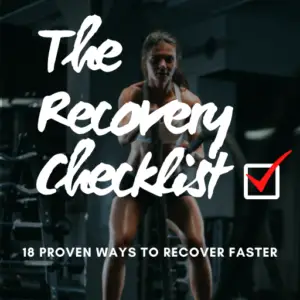How are you most likely to get injured?
Tweak your knee while playing pickup basketball? Wake up with neck pain from sleeping wrong? Pull a hamstring sprinting after your runaway dog? Or develop back pain from deadlifts?
You probably didn’t pick “walking on the beach.”
In the span of several days, 3 people told me their lower leg pain started from walking (or running) on the beach. My wife, Liz, was one of them.
Babymoon Bliss
Rewind a few months, Liz and I enjoyed a weekend on Hilton Head Island. One last trip before our baby boy’s arrival in April.

Naturally, we walked on the beach a lot. By the way, walking outside with loved ones is my favorite stress relief strategy. Because it combines 3 stress-busting elements: social support, being outdoors, exercise (and subsequently better sleep).
Babymoon Bummer
While I worked up a nasty sunburn, Liz developed lateral ankle pain. Later, we figured out it was peroneus longus tendinitis.
The peroneus longus muscle (below) starts on the lateral lower leg, wraps underneath the outside ankle bone and attaches to several foot bones. It stabilizes the foot and prevents ankle sprains.

As you might expect, the peroneus longus muscle works overtime when you walk on soft, uneven surfaces like sand.
Liz’s peroneus longus got irritated from overuse. She doesn’t walk barefoot in the sand very often, so her foot muscles weren’t prepared. Likewise, my pale skin turned bright red because it’s not acclimated to the South Carolina sunshine.
Fortunately, Liz is recovered fast thanks to rest, supportive shoes, and a little trigger point dry needling.
Is The Beach Dangerous?
My goal here is to explain how injuries happen…not discourage beach-goers! Sand isn’t inherently dangerous. But it’s unfamiliar territory for those of us who aren’t beach bums.
Most of us wear shoes and walk on hard surfaces 90% of the time. This isn’t necessarily bad, but it doesn’t condition our legs to handle long walks in the sand.

Barefoot beach walks place enormous, unfamiliar demands on our leg muscles. In other words, it’s too much, too soon. Subsequently, we’re more likely to sustain lower leg injuries like tendinitis, muscle pain and plantar fasciitis.
It’s the same reason I won’t try to run 15 miles this afternoon. Especially if my last run was 6 months ago…to catch the ice cream truck.
Being overzealous and undertrained is a recipe for injury.
Ramping Rules
Here’s my 3 step approach to starting (or restarting) exercise. Consider these principles if you’re returning to the gym, bouncing back from injury, or building a running habit.
1) Start Slow
Rome wasn’t build in a day. Neither are strong, injury-resistant muscles. Start with less than your maximum. Your body will adapt to the new activity within a few weeks.
2) Monitor Symptoms
Mild pain during exercise is OK. Especially during injury rehab. I typically give clients two guidelines for monitoring pain: First, keep pain <5/10 during exercise. Second, do more next time only if pain levels return to baseline within 24 hrs.
3) Build Gradually
The human body is ultra adaptable. But adaptations take time. Like compound interest on an investment, steady progress over time adds up to remarkable results.
I applied this principle during my unorthodox 10k training last year.
Readers: Have you dealt with unexpected injuries? Where pain stemmed from a (seemingly) easy activity, like walking on the beach? How did you handle it? Let me know in the comments.
For more expert wellness insights, join the free Facts & Physio Newsletter. Plus, get The Recovery Checklist when you sign up.

